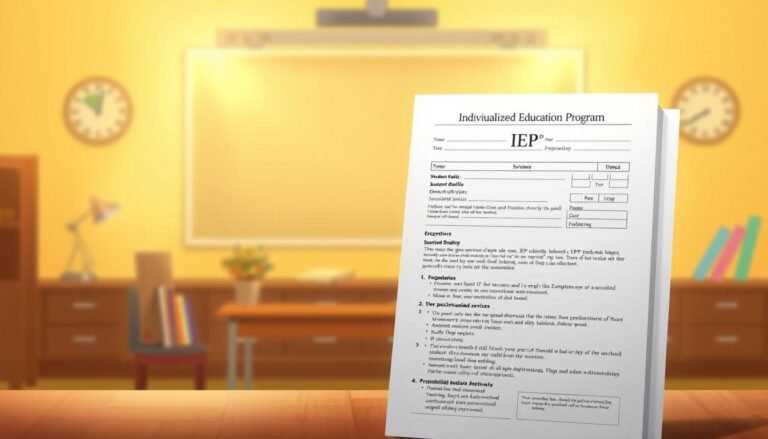
From Struggles to Support: Identifying Learning Disabilities in Young Learners
Introduction
Imagine a vibrant classroom filled with eager young learners, each with a unique blend of talents and challenges. Among them, some children struggle silently with their learning, often misinterpreted as lack of effort or motivation. The journey from struggles to support: identifying learning disabilities in young learners is not just a necessary task; it’s a vital investment in their futures. In an era where educational inclusivity is paramount, recognizing and supporting learning disabilities early can transform lives.
The early years of education shape not just academic skills but also self-esteem and confidence. Unfortunately, many learning disabilities go unnoticed until they significantly impact a child’s educational journey. This comprehensive guide dives deep into identifying learning disabilities in young learners, empowering parents, educators, and caregivers to turn struggles into supportive interventions.
Understanding Learning Disabilities
What Are Learning Disabilities?
Learning disabilities are neurologically-based processing problems that interfere with learning basic skills such as reading, writing, and math. They can also affect higher-level skills such as organization, time planning, and attention. It’s essential to understand that learning disabilities are not an indication of a child’s intelligence but rather a distinction in how they learn.
Common Types of Learning Disabilities
- Dyslexia: Difficulty with word recognition, spelling, and decoding.
- Dyscalculia: Challenges with number sense, calculation, and math concepts.
- Dysgraphia: Problems with writing mechanics, spelling, and organizing thoughts.
- Auditory Processing Disorder: Difficulty understanding language despite normal hearing.
- Visual Processing Disorder: Trouble interpreting visual information.
Prevalence of Learning Disabilities
Research indicates that learning disabilities affect approximately 5-15% of school-aged children. According to the National Center for Learning Disabilities, 1 in 5 children has learning disabilities or attention issues. This statistic highlights the importance of early identification and intervention.
Signs and Symptoms of Learning Disabilities
Identifying learning disabilities in young learners requires vigilance. Here are some common signs to look for based on age groups:
Preschool Years
- Difficulty with language development (limited vocabulary, trouble rhyming).
- Challenges following directions or remembering sequences.
- Poor motor skills (trouble with scissors, inability to throw a ball).
Elementary Years
- Struggle with reading fluency, understanding simple texts.
- Difficulty with basic math concepts and word problems.
- Inconsistent performance in academics (better in some subjects than others).
Middle School Years
- Challenges with note-taking and written expression.
- Trouble organizing tasks and managing time.
- Low self-esteem stemming from academic struggles.
Case Studies Illustrating Real-World Applications
Case Study 1: Emma’s Journey Through Dyslexia
Background: Emma, a bright and curious second grader, was often hesitant to read aloud in class. Her lack of confidence was misattributed to shyness when in fact, she was struggling with dyslexia.
Intervention: After a teacher noticed her frustration, the school conducted an assessment, identifying dyslexia. With tailored reading strategies, including phonics-based interventions and one-on-one tutoring, Emma’s reading skills improved dramatically.
Outcome Analysis: Emma went from reluctant to enthusiastic about reading, demonstrating the profound effects of timely identification and support. This case highlights the importance of recognizing signs early—transforming struggles into success stories.
Case Study 2: Liam’s Mathematical Challenges
Background: At age eight, Liam could not grasp basic addition and subtraction despite significant effort. His teacher labeled him as “lazy,” unaware of his struggles with dyscalculia.
Intervention: Following parental advocacy, an evaluation revealed his specific learning disability. Implementing multi-sensory math interventions helped Liam connect numerical concepts with physical objects.
Outcome Analysis: As Liam engaged with math through tangible resources, his understanding deepened, significantly boosting his confidence. His story stresses the importance of advocacy and persistence in identifying learning disabilities effectively.
Tools and Strategies for Identification
Screening Tools
- Parent and Teacher Observations: Regular communication can provide insights into a child’s progress and areas of concern.
- Standardized Assessments: Tools such as the Wechsler Individual Achievement Test (WIAT) can identify potential disabilities.
- Developmental Checklists: These can help parents recognize signals that warrant further evaluation.
Informal Assessment Strategies
- Work Samples: Reviewing a child’s work can reveal patterns in errors or inconsistencies.
- Observations in Different Contexts: Notice how the child performs in varying settings—classroom, home, or during play.
Professional Evaluations
If concerns persist, a formal evaluation by psychologists or special educators may be necessary. This can lead to a diagnosis and the creation of an Individualized Education Plan (IEP) or a 504 plan offering specific accommodations.
Creating a Supportive Environment
Building Awareness and Acceptance
Educators and parents must foster an environment where learning differences are acknowledged and celebrated. Training sessions emphasizing the significance of diverse learning styles can be impactful.
Effective Communication
Maintain an open dialogue between parents and teachers, ensuring aligned goals for the child. Sharing successes and challenges collaboratively strengthens support systems.
Collaborating with Specialists
Engaging with special educators, psychologists, and speech or occupational therapists can provide a network of support. These professionals can offer strategies, interventions, and assessments tailored to the child’s unique needs.
Fostering a Growth Mindset
Encourage children to view challenges as opportunities for growth. Celebrating small successes can motivate and help them build resilience.
Conclusion
Identifying learning disabilities is a critical step in turning struggles into support. Through understanding the signs, recognizing the types of learning disabilities, and implementing proactive measures, we can create an environment conducive to success for young learners.
As we move forward, let each educator and caregiver become champions for children, ensuring that every young learner receives the necessary tools to thrive. By addressing learning disabilities early, we enable not just academic success but also the development of self-confidence and a love for learning that lasts a lifetime.
Let’s commit to this journey together and transform the narrative from struggles to support!
FAQs
1. What is the difference between a learning disability and learning difficulty?
A learning disability is a neurological condition that affects how a person processes information, while learning difficulties may be temporary hindrances in acquiring knowledge, often due to environmental factors or limited exposure.
2. How can parents approach teachers about their concerns?
Parents should document specific observations regarding their child’s challenges and schedule a meeting to discuss these concerns openly and collaboratively with the teacher.
3. What assessments are used to diagnose learning disabilities?
Common assessments include cognitive, academic achievement tests, and behavioral observations typically conducted by certified professionals.
4. Can learning disabilities be outgrown?
While some children may develop strengths that mitigate their disabilities, many will carry their learning disabilities into adulthood. Early interventions play a crucial role in managing them.
5. What accommodations can be made in the classroom?
Accommodations can include extended testing time, alternative formats of materials, and modified assignments tailored to the child’s learning style.
6. How can families support children with learning disabilities at home?
Families can create structured routines, establish a dedicated homework space, and utilize resources like educational games and apps designed to reinforce skills.
By harnessing knowledge and compassion, we can ensure that every child receives the support they need to navigate their educational journeys successfully!
















